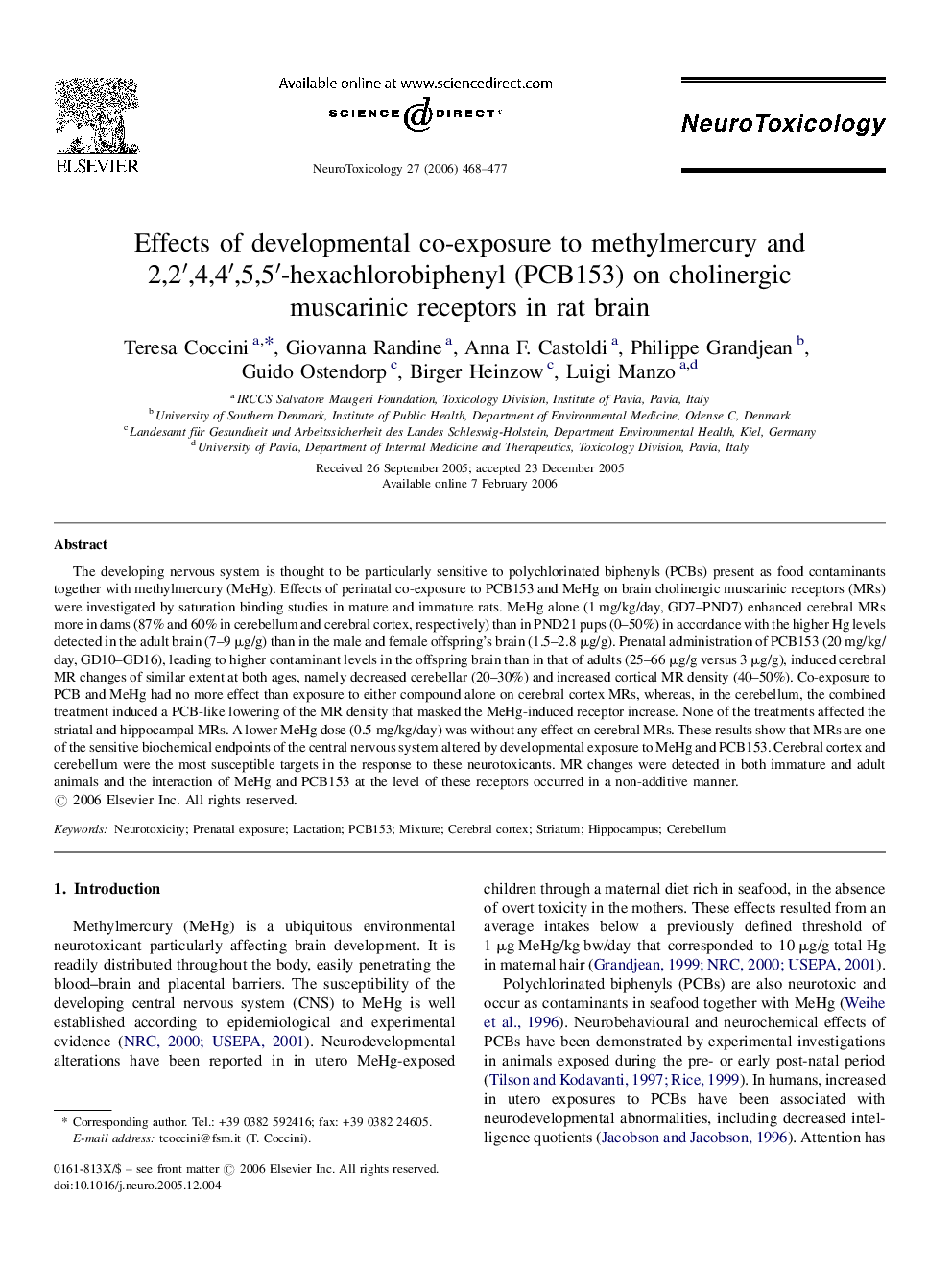| Article ID | Journal | Published Year | Pages | File Type |
|---|---|---|---|---|
| 2590613 | NeuroToxicology | 2006 | 10 Pages |
The developing nervous system is thought to be particularly sensitive to polychlorinated biphenyls (PCBs) present as food contaminants together with methylmercury (MeHg). Effects of perinatal co-exposure to PCB153 and MeHg on brain cholinergic muscarinic receptors (MRs) were investigated by saturation binding studies in mature and immature rats. MeHg alone (1 mg/kg/day, GD7–PND7) enhanced cerebral MRs more in dams (87% and 60% in cerebellum and cerebral cortex, respectively) than in PND21 pups (0–50%) in accordance with the higher Hg levels detected in the adult brain (7–9 μg/g) than in the male and female offspring's brain (1.5–2.8 μg/g). Prenatal administration of PCB153 (20 mg/kg/day, GD10–GD16), leading to higher contaminant levels in the offspring brain than in that of adults (25–66 μg/g versus 3 μg/g), induced cerebral MR changes of similar extent at both ages, namely decreased cerebellar (20–30%) and increased cortical MR density (40–50%). Co-exposure to PCB and MeHg had no more effect than exposure to either compound alone on cerebral cortex MRs, whereas, in the cerebellum, the combined treatment induced a PCB-like lowering of the MR density that masked the MeHg-induced receptor increase. None of the treatments affected the striatal and hippocampal MRs. A lower MeHg dose (0.5 mg/kg/day) was without any effect on cerebral MRs. These results show that MRs are one of the sensitive biochemical endpoints of the central nervous system altered by developmental exposure to MeHg and PCB153. Cerebral cortex and cerebellum were the most susceptible targets in the response to these neurotoxicants. MR changes were detected in both immature and adult animals and the interaction of MeHg and PCB153 at the level of these receptors occurred in a non-additive manner.
